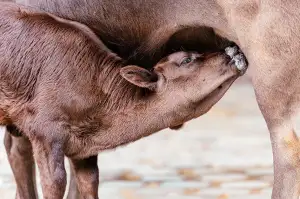Grease Stains No More: Master the Art of Removing Grease from Clothes with These Home Remedies

- Gather necessary materials for grease stain removal
- Pre-treat the grease stain with dish soap or laundry detergent
- Gently rub the detergent into the stain using a soft brush or cloth
- Rinse the stained area with warm water to remove excess grease
- Apply a stain remover or vinegar solution to further break down the grease
- Allow the stain remover to sit for a few minutes before laundering
- Wash the garment in the hottest water suitable for the fabric
- Inspect the stain after washing and repeat the process if necessary
- Air dry or machine dry the clothing, depending on fabric instructions
- Final tips and precautions for effective grease stain removal at home
Grease stains on clothes can be a real nightmare, but fear not! With the right techniques and materials, you can easily remove those stubborn marks and restore your garments to their former glory. In this article, we will guide you through the step-by-step process of getting rid of grease stains using simple home remedies. So say goodbye to unsightly grease stains and hello to fresh, clean clothes!
Gather necessary materials for grease stain removal
To effectively remove grease stains from clothes, it is important to gather the necessary materials before starting the stain removal process. You will need dish soap or laundry detergent, a soft brush or cloth, warm water, a stain remover or vinegar solution, and access to a washing machine. Having these materials readily available will ensure that you can tackle the grease stain promptly and efficiently. Remember, quick action is key when it comes to successfully removing grease stains from clothing.
Pre-treat the grease stain with dish soap or laundry detergent
To effectively remove grease stains from clothes, it is important to pre-treat the stain as soon as possible. Begin by gathering dish soap or laundry detergent, a soft brush or cloth, and warm water. Apply a small amount of dish soap or laundry detergent directly onto the stain. Gently rub the detergent into the fabric using a soft brush or cloth, working it in circular motions. This helps to break down the grease and loosen its hold on the fabric fibers. Be careful not to scrub too vigorously, as this may damage delicate fabrics. Allow the detergent to sit on the stain for about 10 minutes before moving on to the next step.
Gently rub the detergent into the stain using a soft brush or cloth
After pre-treating the grease stain with dish soap or laundry detergent, it's time to gently rub the detergent into the stain using a soft brush or cloth. This will help loosen and break down the grease particles embedded in the fabric. Be careful not to scrub too vigorously, as this may damage delicate fabrics. Instead, use gentle circular motions to work the detergent into the stain. Take your time and ensure that all areas of the stain are covered.
Rinse the stained area with warm water to remove excess grease
After pre-treating the grease stain with dish soap or laundry detergent, it's important to rinse the stained area with warm water. This step helps to remove any excess grease that may still be on the fabric. Simply run warm water over the stain, making sure to thoroughly rinse the area. Be careful not to use hot water as it can set the stain further into the fabric. The warm water will help to loosen and flush away the remaining grease, preparing the garment for further treatment.
Apply a stain remover or vinegar solution to further break down the grease
To further break down the grease, you can apply a stain remover or create a vinegar solution. Stain removers are specifically designed to target and eliminate tough stains like grease. Apply a small amount of the stain remover directly onto the stain and gently rub it in using a soft brush or cloth. Alternatively, you can make a vinegar solution by mixing equal parts of white vinegar and water. Dab the solution onto the grease stain and let it sit for a few minutes before proceeding to launder the garment. Both options will help break down the grease and improve the chances of successful stain removal.
Allow the stain remover to sit for a few minutes before laundering
After applying the stain remover or vinegar solution, it is important to allow it to sit on the grease stain for a few minutes before laundering. This gives the solution enough time to penetrate and break down the grease particles. The longer you let it sit, the better chance you have of completely removing the stain. However, be cautious not to let it sit for too long as it may cause discoloration or damage to the fabric. Use this waiting period wisely by gathering any other garments with grease stains that need treatment.
Wash the garment in the hottest water suitable for the fabric
When it comes to washing the garment, it is important to use the hottest water that is suitable for the fabric. Hot water helps to break down and remove grease stains effectively. However, it is crucial to check the care label of the clothing item before proceeding with hot water washing. Some fabrics may be sensitive to high temperatures and can get damaged. Always follow the manufacturer's instructions to ensure proper care and maintenance of your clothes.
Inspect the stain after washing and repeat the process if necessary
After washing the garment, it is important to inspect the stain to determine if it has been completely removed. If there are still traces of grease, do not panic. Simply repeat the process of pre-treating and laundering the clothing. Sometimes stubborn grease stains require multiple treatments to fully disappear. Be patient and persistent in your efforts, as each round of treatment brings you closer to successfully removing the stain. Remember, quick action is key when dealing with grease stains, so don't wait too long before taking action.
Air dry or machine dry the clothing, depending on fabric instructions
After successfully removing the grease stain from your clothing, it's important to properly dry the garment. Check the fabric care instructions to determine whether it should be air dried or machine dried. Some delicate fabrics may require air drying to prevent damage, while others can withstand machine drying. Following these instructions will ensure that your clothes are not only stain-free but also in their best condition.
Final tips and precautions for effective grease stain removal at home
1. Act quickly: The sooner you treat a grease stain, the better chance you have of removing it completely. Don't let the stain set in.
2. Test on a small area: Before applying any cleaning solution, test it on a hidden part of the garment to ensure it doesn't cause any damage or discoloration.
3. Avoid heat: Heat can set the stain, so avoid using hot water or high heat when treating grease stains. Stick to warm or cold water instead.
4. Blot, don't rub: When pre-treating or rinsing the stain, always blot gently with a clean cloth or paper towel instead of rubbing vigorously. Rubbing can spread the grease and make the stain worse.
5. Use natural remedies: If you prefer eco-friendly options, try using baking soda, cornstarch, or lemon juice to absorb and lift grease stains before washing.
6. Read fabric care labels: Different fabrics require different treatment methods, so always check the garment's care label for specific instructions on how to remove stains without damaging the fabric.
7. Seek professional help if needed: If all else fails and the grease stain persists, consider taking your garment to a professional cleaner who has expertise in dealing with tough stains.
Remember, successful grease stain removal depends on prompt action and using appropriate techniques. With these final tips and precautions in mind, you'll be well-equipped to tackle any greasy mishaps that come your way!
In conclusion, it is crucial to act quickly when dealing with grease stains on clothes. The longer the stain sits, the harder it becomes to remove. By following these home remedies and taking immediate action, you can successfully eliminate grease stains from your garments. Remember to gather the necessary materials, pre-treat the stain, rinse and apply a stain remover or vinegar solution. Inspect the stain after washing and repeat if needed. With these tips and precautions, you can master the art of removing grease stains and keep your clothes looking fresh and clean.
Published: 10. 12. 2023
Category: Food



